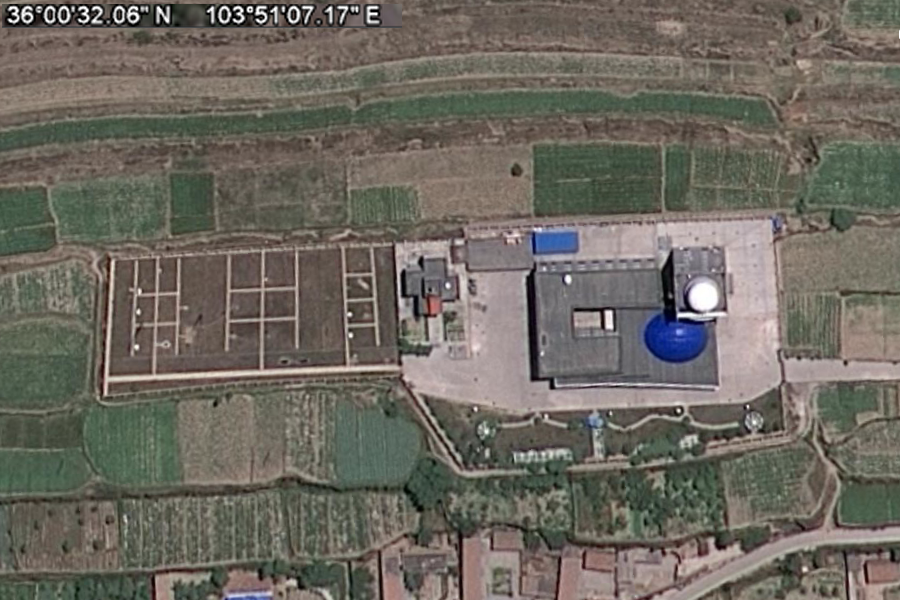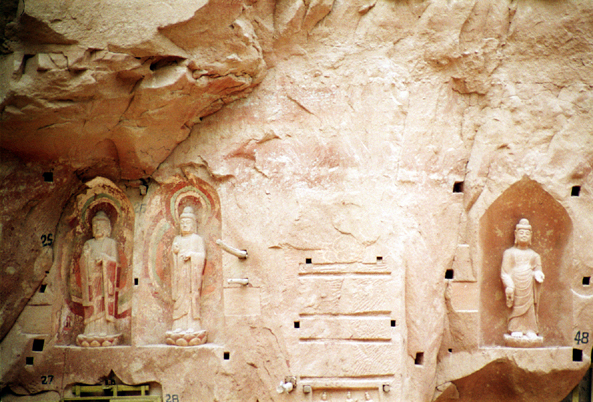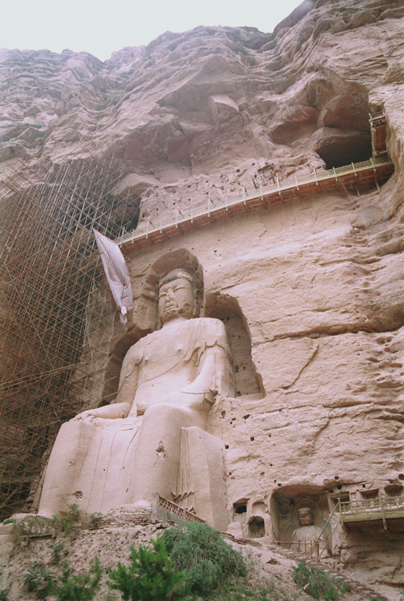|
|
|||
|
Gansu Province in northwestern China 36°02' 0.0"N, 103°48'0.0"E ..
Lanzhou (simplified Chinese: 兰州; traditional Chinese: 蘭州; pinyin: Lánzhōu; Wade-Giles: Lan-chou; Postal map spelling: Lanchow) is a prefecture-level city and capital of Gansu province in northwestern China. SOURCE: Wikipedia Lanzhou The Search for the Ionospheric Sounding Network in China
|
|||
|
Bingling Temple 80km from Lanzhou 35° 52′ 6″ N, 103° 10′ 3″ E ..
Bingling Temple The Bingling Temple (simplified Chinese: 炳灵寺; traditional Chinese: 炳靈寺; pinyin: Bǐnglíng Sì) is a series of grottoes filled with Buddhist sculpture carved into natural caves and caverns in a canyon along the Yellow River. It lies just north of where the Yellow River empties into the Liujiaxia Reservoir created by the Liujiaxia Dam at Yongjing, about 80km from Lanzhou. Administratively, the site is in Linxia Hui Autonomous Prefecture in Gansu province. The caves were a work in progress for more than a millennium. The first grotto was begun around 420 CE at the end of the Western Jin Dynasty. Work continued and more grottoes were added during the Wei, Sui, Tang, Song, Yuan, Ming, and Qing dynasties. The style of each grottoe can easily be connected to the typical artwork from its corresponding dynasty. The Bingling Temple is both stylistically and geographically a midpoint between the monumental Buddhas of Bamiyan in Afghanistan and the Buddhist Grottoes of central China, Yungang Grottoes near Datong and Longmen Grottoes near Luoyang. Over the centuries, earthquakes, erosion, and looters have damaged or destroyed many of the caves and the artistic treasures within. Altogether there are 183 caves, 694 stone statues, and 82 clay sculptures that remain. The relief sculpture and caves filled with buddhas and frescoes line the northern side of the canyon for about 200 meters. Each cave is like a miniature temple filled with Buddhist imagery. These caves culminate at a large natural cavern where wooden walkways precariously wind up the rock face to hidden cliff-side caves and the giant Maitreya Buddha that stands more than 27 meters, or almost 100 feet, tall. The sculptures, carvings, and frescoes that remain are outstanding examples of Buddhist artwork and draw visitors from around the world. The site is extremely remote and can only be reached by boat from Yongjing during summer and fall. The rest of the year, the site is inaccessible, as there are no roads in the area. ..
SOURCE: Wikipedia Bingling_Temple |
|||
| FAIR USE NOTICE: This page contains copyrighted material the use of which has not been specifically authorized by the copyright owner. Pegasus Research Consortium distributes this material without profit to those who have expressed a prior interest in receiving the included information for research and educational purposes. We believe this constitutes a fair use of any such copyrighted material as provided for in 17 U.S.C § 107. If you wish to use copyrighted material from this site for purposes of your own that go beyond fair use, you must obtain permission from the copyright owner. | |||
|
|





